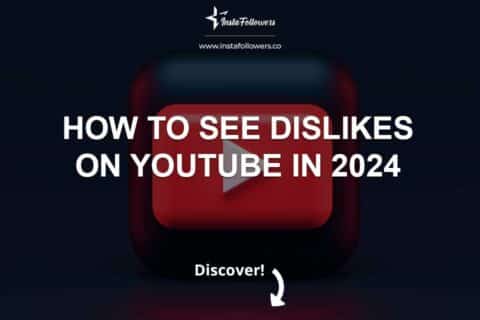When we want to learn something, we immediately check YouTube tutorials nowadays. However, YouTube educational videos are not just for educating viewers. They can also help businesses grow by providing educational content to potential customers. They also help businesses establish themselves as industry leaders and earn the trust of their audience. Additionally, YouTube educational videos are easy and enjoyable to produce. So, why don’t you create educational videos? In this article, we’ll learn more about how to make educational videos and why educational YouTube videos can be a great choice to boost your YouTube performance.
- What Are Educational Videos?
- 5 Best Techniques for Engaging Educational Videos
- Great Software for Educational Videos
- 4 Production Hacks that’ll Help You Make More Effective and Engaging Videos
- It’s Here! Your Cheat Sheet for Making Videos in Less than 30 Minutes Using AI
- What Are the Key Elements of a Good Educational Video Script?
- Conclusion
- Frequently Asked Questions About
What Are Educational Videos?
Educational videos on YouTube are content designed to impart knowledge, teach skills, or explain concepts to viewers. YouTube educational videos aim to educate and inform the audience on specific subjects or topics, ranging from academic lessons and tutorials to how-to guides and informative discussions. Educational videos on YouTube use various strategies to captivate audiences and make learning enjoyable and enriching. Clear explanations, visual aids, engaging narration, and interactive elements are some of the main elements that create these videos. Overall, YouTube educational videos play a vital role in providing free and easily accessible learning opportunities to a global audience. Moreover, they can attract organic users to your page and help you increase your credibility.
5 Best Techniques for Engaging Educational Videos
To successfully captivate and instruct viewers, educational videos must have several strategies. The following five strategies will help your instructional material stand out:
- Storytelling: Adding storytelling elements to instructional videos can draw viewers in and help make abstract concepts more approachable and understandable.
- Visual Aids: By giving the spoken content visual reinforcement, using visuals such as charts, diagrams, animations, and graphics improves comprehension.
- Interactive Elements: Encouraging viewers to participate actively and learning is achieved by using quizzes, interactive questions, or prompts.
- Short Segments: By dividing content into manageable chunks, you can keep viewers interested and avoid information overload.
- Clear Communication: Concepts are easily understood and retained when straightforward language is used with captivating narration.
By using these techniques, you can create educational videos that not only educate but also engage and motivate your audience. So your viewers can have an effective and enjoyable learning experience. You can also buy YouTube subscribers to reach more people fast!
Great Software for Educational Videos
Well-known programs for editing and producing educational content include Adobe Premiere Pro, Camtasia, and Final Cut Pro. Specialized websites like Canva for graphics and visuals or Vyond for animations can also be used in video creation. Aside from these tools, several other tools offer several different solutions.

The 7-Step Process of How to Make an Educational Video
By following these steps, you can now start creating educational videos:
- Research and Outline: Identify your subject, do deep research, and lay out your video’s main ideas and format.
- Writing a script requires clarity and conciseness. It should also follow a logical flow and align with the video’s goals.
- Recording: Make sure to record your content with high-quality audio and video, and make sure to capture captivating images or demonstrations.
- Editing: To improve overall quality, add images, remove excessive sections, and refine content, use editing software. You can learn more about how to make a good YouTube thumbnail.
- Including Visuals: To make it easier to understand, include graphics, animations, or additional visuals.
- Examine and Refine: Make any necessary changes after reviewing your video to ensure it’s accurate and engaging.
- Publication: Join the conversation with your viewers by leaving comments and feedback on your YouTube video. Optimize your video first and then upload it.
4 Production Hacks that’ll Help You Make More Effective and Engaging Videos
Let’s now closely examine the four great hacks to help you with engaging videos!
Divide Into Smaller Parts
When it’s divided into smaller parts, information is processed more effectively. As you start writing your video script, think about the perfect duration for your video. Divide up complicated material into more manageable video segments. Your audience will be better able to concentrate and feel less overwhelmed. You can also learn more from the YouTube Help!
Infuse Emotions and Tell Relatable Stories
Consider creating narratives that people can relate to when creating your instructional videos. You can narrate stories or provide examples the audience will quickly comprehend and relate to.

Tune Your Videos to The Brain’s “Dual Coding” Functioning
Smartly combine visuals and narration in your YouTube educational videos. Select only essential information and pair it with supporting visuals.
Use Spaced Repetition to Reinforce Learning
Over time, repetition strengthens long-term memory. Keep the main point of your instructional videos on focus and provide brief but helpful facts to back it up. Throughout the video, carefully state and repeat the most important ideas. Additionally, always conduct a recap before issuing a call to action. You can also buy YouTube auto views to boost your posts automatically and more efficiently!
It’s Here! Your Cheat Sheet for Making Videos in Less than 30 Minutes Using AI
Making educational videos can be a time-consuming process. However, AI-powered tools have made it more efficient. These tools automate tasks like editing, captioning, and adding animations, which reduces production time without affecting the quality of the final product. Additionally, these tools are available for free, making video creation more accessible to everyone.

What Are the Key Elements of a Good Educational Video Script?
A well-crafted script for YouTube educational videos focuses on clarity, structure, and engagement. It begins with a compelling introduction to capture attention, followed by a clear outline of topics or concepts to be covered. The script should maintain a conversational tone, use understandable language, and employ storytelling techniques to maintain viewer interest. Effective scripts incorporate logical progression, supporting examples, and a concise conclusion reinforcing key takeaways. Don’t forget to check how to make money on YouTube guide to learn more!
Conclusion
YouTube educational videos are like hidden gems of learning, bringing fascinating knowledge right to your screen. They’re informative and super engaging, making learning a fun and immersive experience. Think of them as your virtual classroom, where complex stuff gets broken down into easily understandable, engaging bits. These videos aren’t just about teaching; they spark curiosity, fueling your desire to explore more. Ultimately, educational YouTube videos are your ticket to endless learning adventures. Thanks to them, you can grow and explore new horizons. Last but not least, uploading these videos can boost your viewers as they already have a huge fan base.









4 Comments
Really appreciated this article on making educational YouTube videos! The tips on engaging storytelling and visual aids were particularly helpful. I’m curious, how important is the length of the video for keeping viewers engaged, especially for educational content?
The length of an educational video is crucial in maintaining viewer engagement. Generally, shorter videos (around 10 minutes) are more effective for keeping the audience’s attention, especially when targeting a younger audience or covering straightforward topics. However, more complex subjects might require longer videos to ensure thorough coverage. The key is to keep the content concise and engaging throughout, regardless of length.
This was an excellent guide for creating educational content on YouTube. The advice on scriptwriting and maintaining viewer engagement was spot-on. Do you have any specific recommendations for balancing educational depth with entertainment to cater to a broader audience?
Balancing educational depth with entertainment is a fine art. Start by understanding your audience’s preferences and knowledge level. Use storytelling techniques and relate real-life examples to make complex concepts easier to grasp. Adding humor, interesting visuals, and interactive elements like quizzes can make the content more engaging. However, ensure that these elements complement the educational material rather than distract from it.